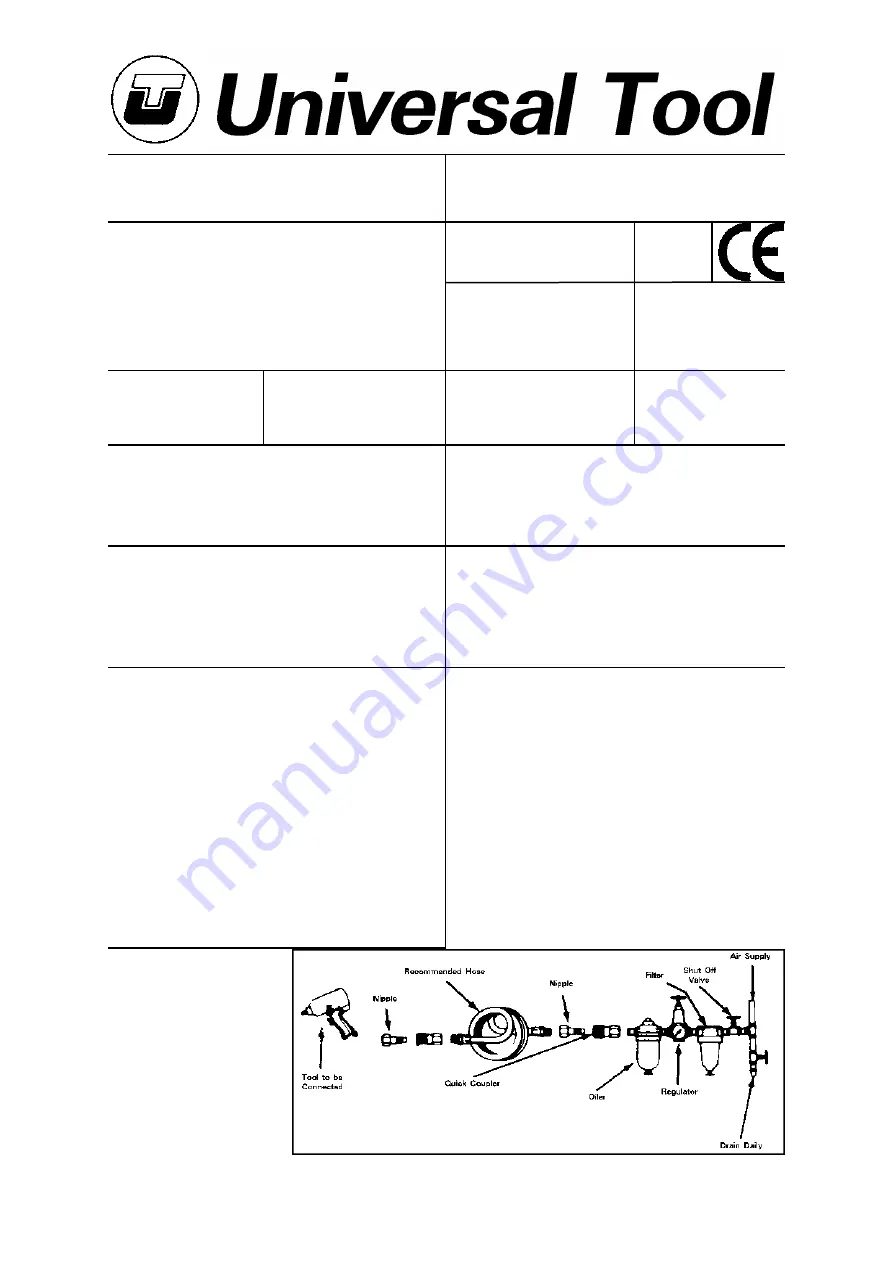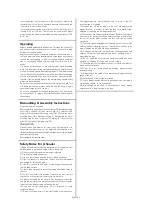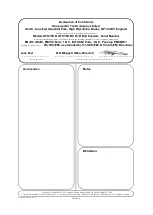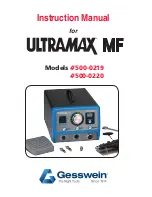
Important
Read these instructions carefully before installing, operating,
servicing or repairing this tool. Keep these instructions in a safe
accessible place.
Operator Instructions
Includes - Foreseen Use, Work Stations, Putting Into Service, Operating,
Dismantling, Assembly and Safety Rules
Manufacturer/Supplier
Product Type
RPM
Cycles Per Min
Model No/Nos
Serial No
Product Nett Weight
lbs
Kg
Recommended Use Of
Balancer Or Support
Recommended Hose Bore
Size - Minimum
Recommended Max.
Hose Length
Ins
M/M
Ft
M
No
Page No 1
Heavy Duty Dual Action
Sanders-150mm (6” Dia Pad)
UT8709
UT8709-DC (Dust
Collecting)
2.9
1.3
3/8
10
30
10
9,000
Universal Air Tool Company Limited
Unit 8
Lane End Industrial Park
High Wycombe
Bucks
HP14 3BY
Work Stations
The tool should only be used as a
hand held hand operated tool. It is
always recommended that the tool is
used when standing on a solid floor.
It can be used in other positions but
before any such use the operator
must be in a secure position having a
firm grip and footing and be aware of
the safety rules to be obeyed when
using the sander.
Foreseen Use of Tool
This tool is designed for the purpose of cleaning or sanding of a
variety of materials typically metal, wood, plastic materials, etc. The
dual rotary orbital action reduces the amount of abrasive grinding
marks and hence is primarily a finishing sanding tool. It can be used
with a variety of grades of 150 mm (6” diameter) abrasive discs
which, according to pad fitted to the tool, can be self adhesive or
Velcro attached. If fitted to the dust collecting system this should
always be used. The system may be integral or required to be fixed
to an external vacuum source.
The machine fitted with dust collection should not be used with water.
If use with water is required, water can act as a dust suppressor and
the dust collector would not be required.
Do not use the tool for any other purpose to that for which it has
been designed and use only abrasive discs as described.
Do not modify the tool for any other use or for its use as a sander
without first consulting the manufacturer or his authorised distributor.
Putting Into Service
Air Supply
Use a clean lubricated air supply that will give a measured air pressure
at the tool of 90 p.s.i./6.3 bar when the tool is running with the
trigger/lever fully depressed. Use recommended hose size and
length. It is recommended that the tool is connected to the air supply
as shown in figure 1. Do not connect the tool to the air line system
without incorporating an easy to reach and operate air shut off valve.
The air supply should be lubricated. It is strongly recommended that
an air filter, regulator, lubricator (FRL) is used as shown in Figure 1
as this will supply clean, lubricated air at the correct pressure to the
tool. Details of such equipment can be obtained from your supplier.
If such equipment is not used then the tool should be lubricated by
shutting off the air supply to the tool, depressurising the line by
pressing the trigger on the tool. Disconnect the air line and pour into
the intake bushing a teaspoonful (5ml) of a suitable pneumatic motor
lubricating oil preferably incorporating a rust inhibitor. Reconnect tool
Tel No
Fax No
(01494) 883300
(01494) 883237
Noise Level
Sound Pressure Level 80.0 dB(A)
Test Method
Tested in accordance with Pneurop
test code PN8NTC1 and ISO Standard 3744
Vibration Level
Test Method
Tested in accordance with ISO
standards 8662 Parts 1 & 8
Less than 2.5
Metres / Sec²
Air Pressure
Recommended Working
6.3
bar
90
PSI
Recommended Minimum
n/a
bar
n/a
PSI
Maximum
7.0
bar
100
PSI
Personal Safety Equipment
Use - Safety Glasses
Yes
Use - Safety Gloves
Use - Safety Boots
Use - Breathing Masks
Yes
Use - Ear Protectors






















